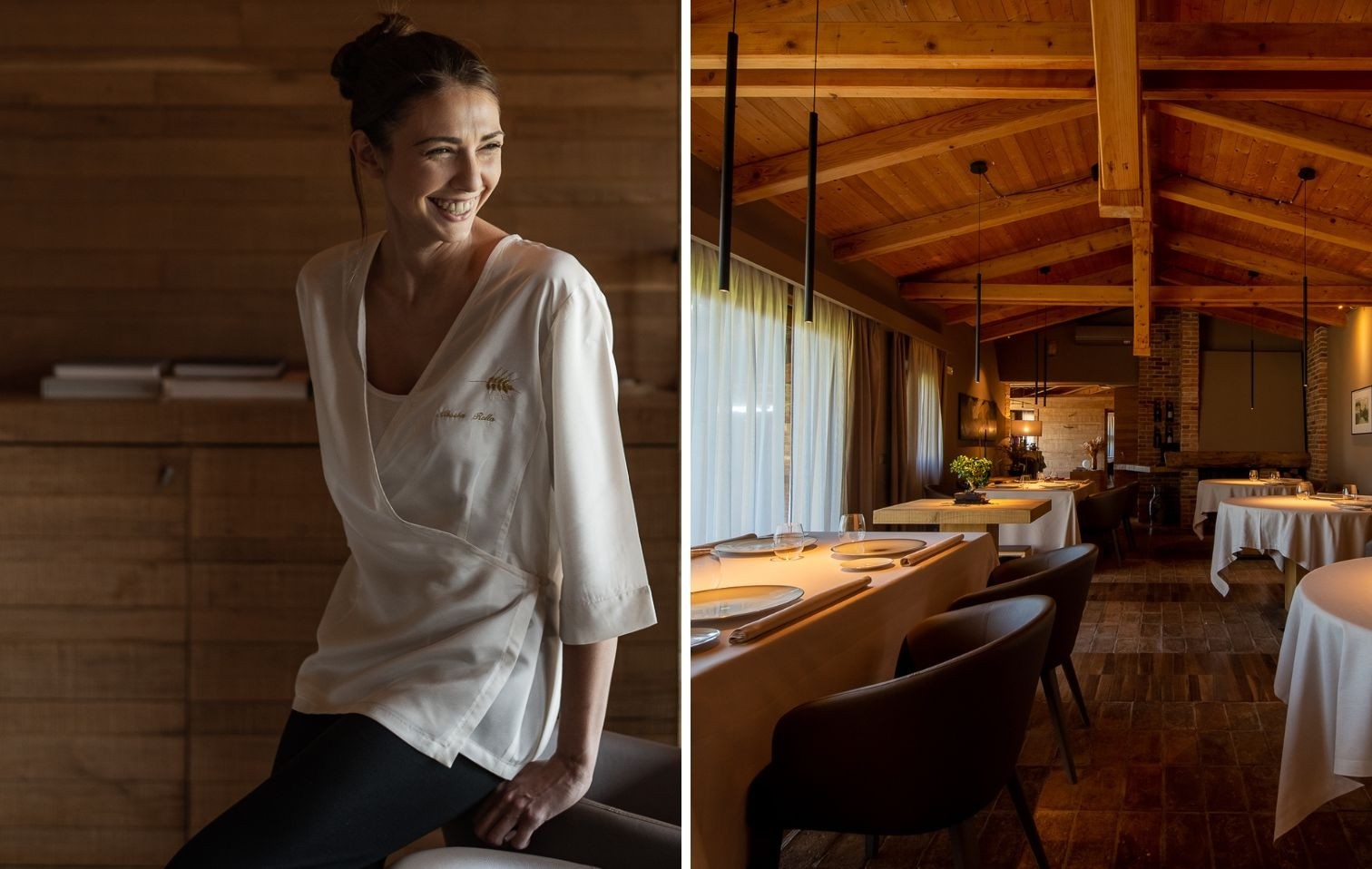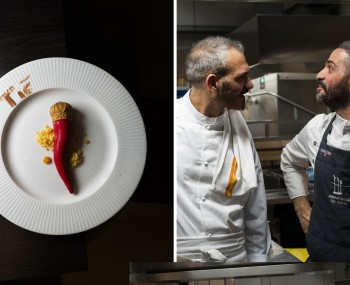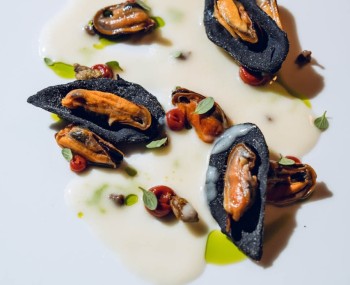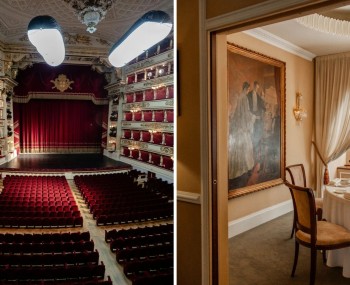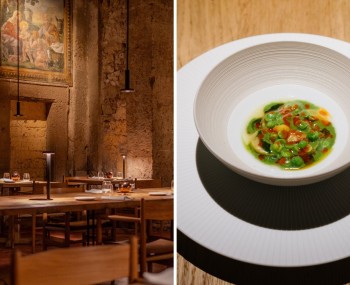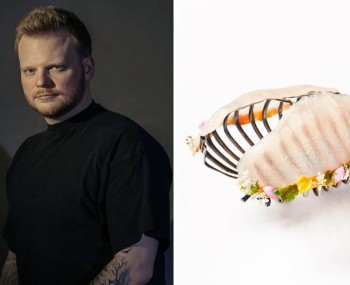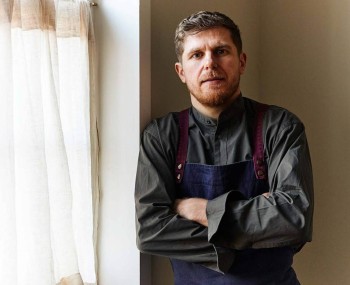Tasting her dishes is surprising when one learns that Alessia is totally self-taught: after a debut in the dining room on weekends, the young chef of Cantina Nicola chose the kitchen. And now she continues her journey with many ideas in the making.
The hills of Monferrato deserve to be known and visited. We are in Piedmont, in the Asti area: Cantina Nicola was born in these areas, in Cocconato, among the most beautiful villages in Italy, in 2002 . At first - the name easily suggests it - wine was produced there, eleven years later the offer was expanded with the opening of a restaurant, behind which, as often happens, there is a love story.
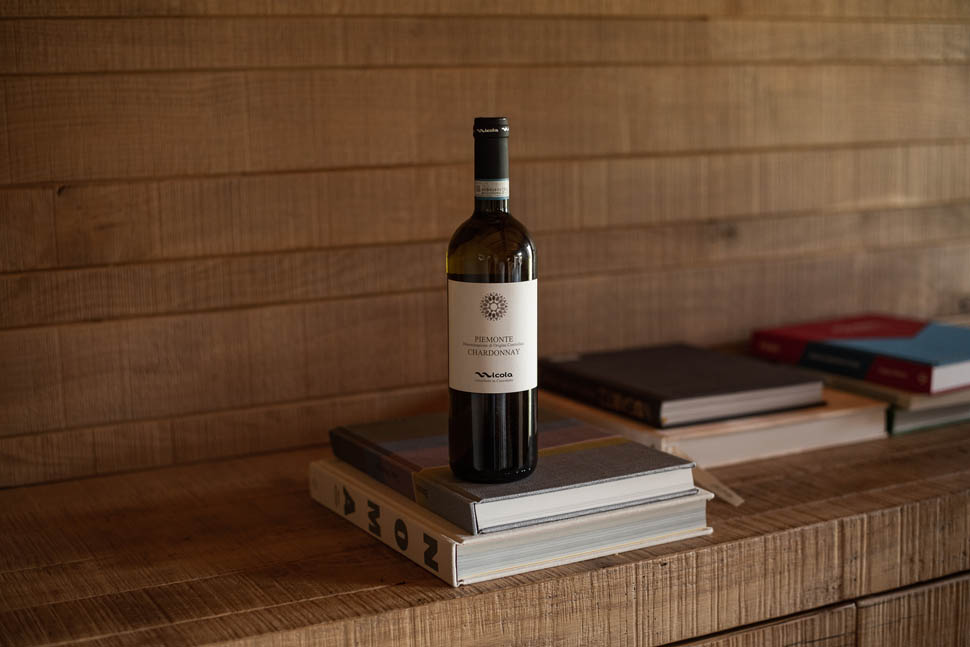
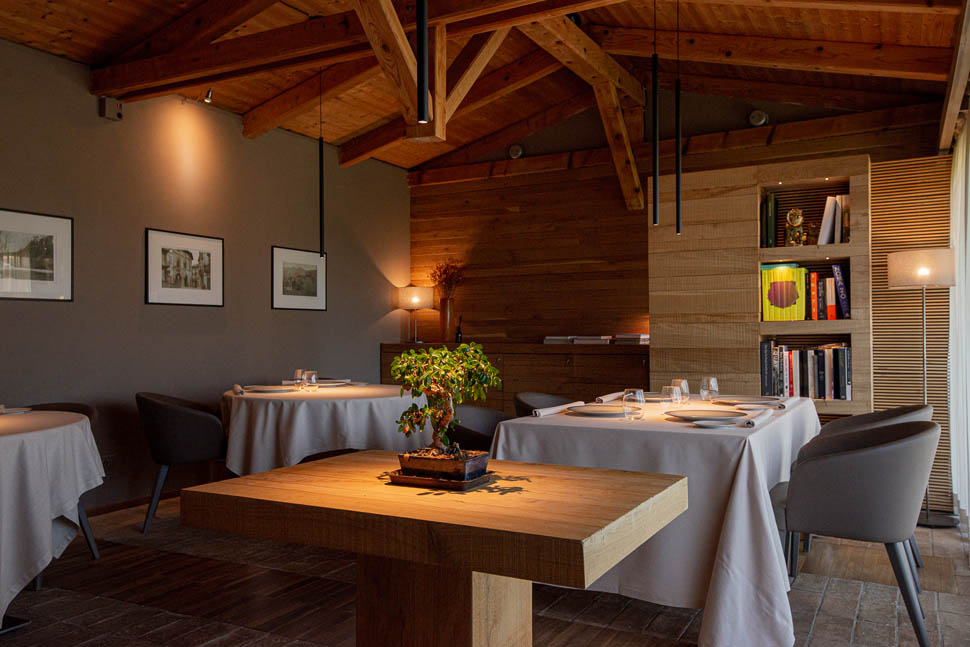
The chef
Alessia Rolla, class of 1990, was many things before she slipped into the kitchen; but to the detriment of the fact that from an early age, when her grandmother would put on her apron to get help with agnolotti, the ball was clear in her mind, she was not a cook. In fact, she tells us, “I went to technical school and conservatory at the same time, and in middle school I played clarinet in a band. I got a job, but I didn't like being a surveyor: I'm passionate about architecture and design, in short I wanted to do something else. It was not easy to change: I started working for two architectural firms, one in Turin and the other in Alba. That was until my brother-in-law Federico opened the agriturismo.”
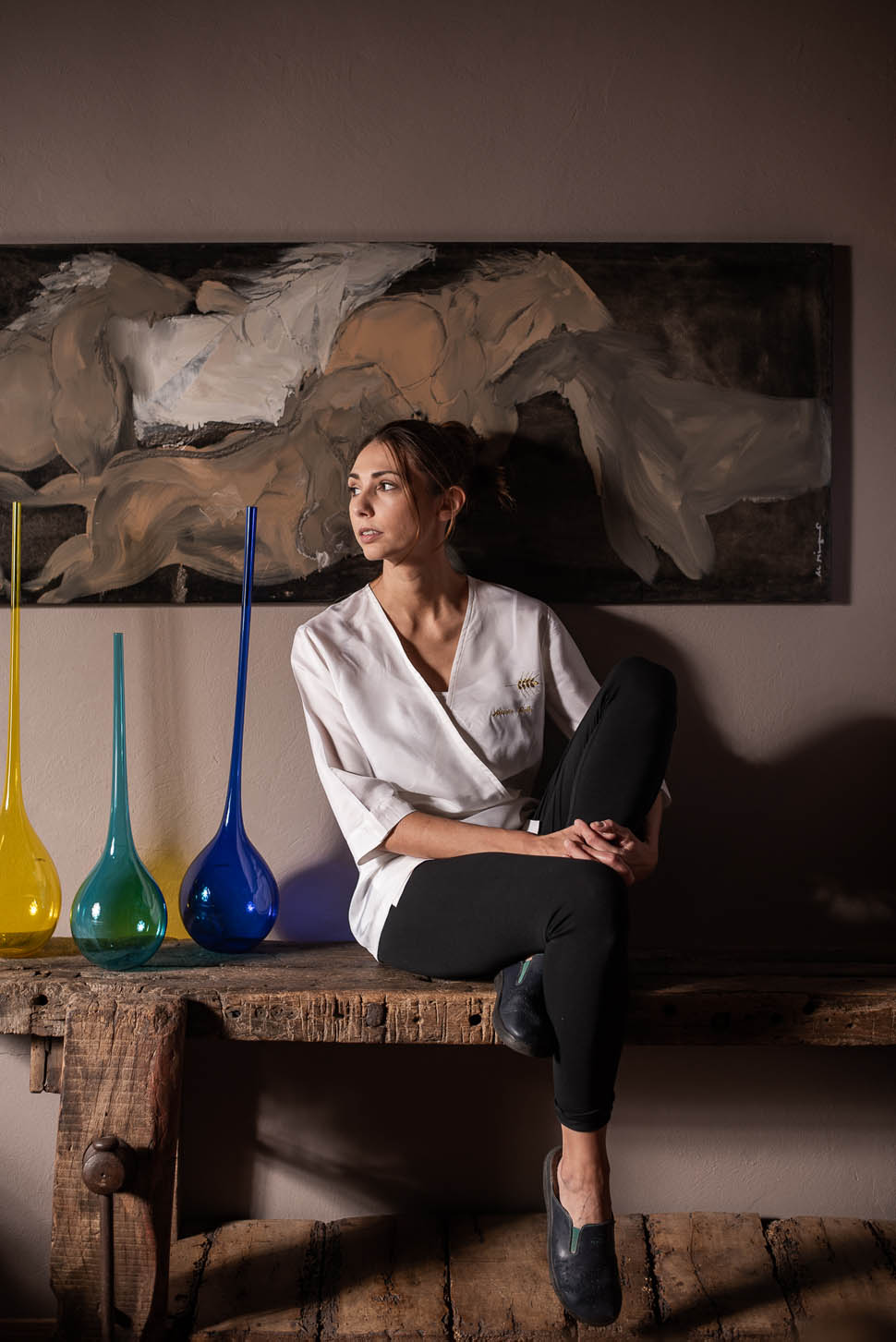
In the meantime Alessia married Riccardo, now in the service team; she then began as a waitress helping out on weekends, “Riccardo used to see me coming home from work always late, slowly he got me involved and after a while I quit my other job.” Tasting her dishes is surprising when one learns that Alessia is totally self-taught: “I studied a lot and went out to eat a lot, the first real experience was at Cracco's in Milan, in the old location on Via Hugo. I was blown away, one of the best experiences I've ever had.”
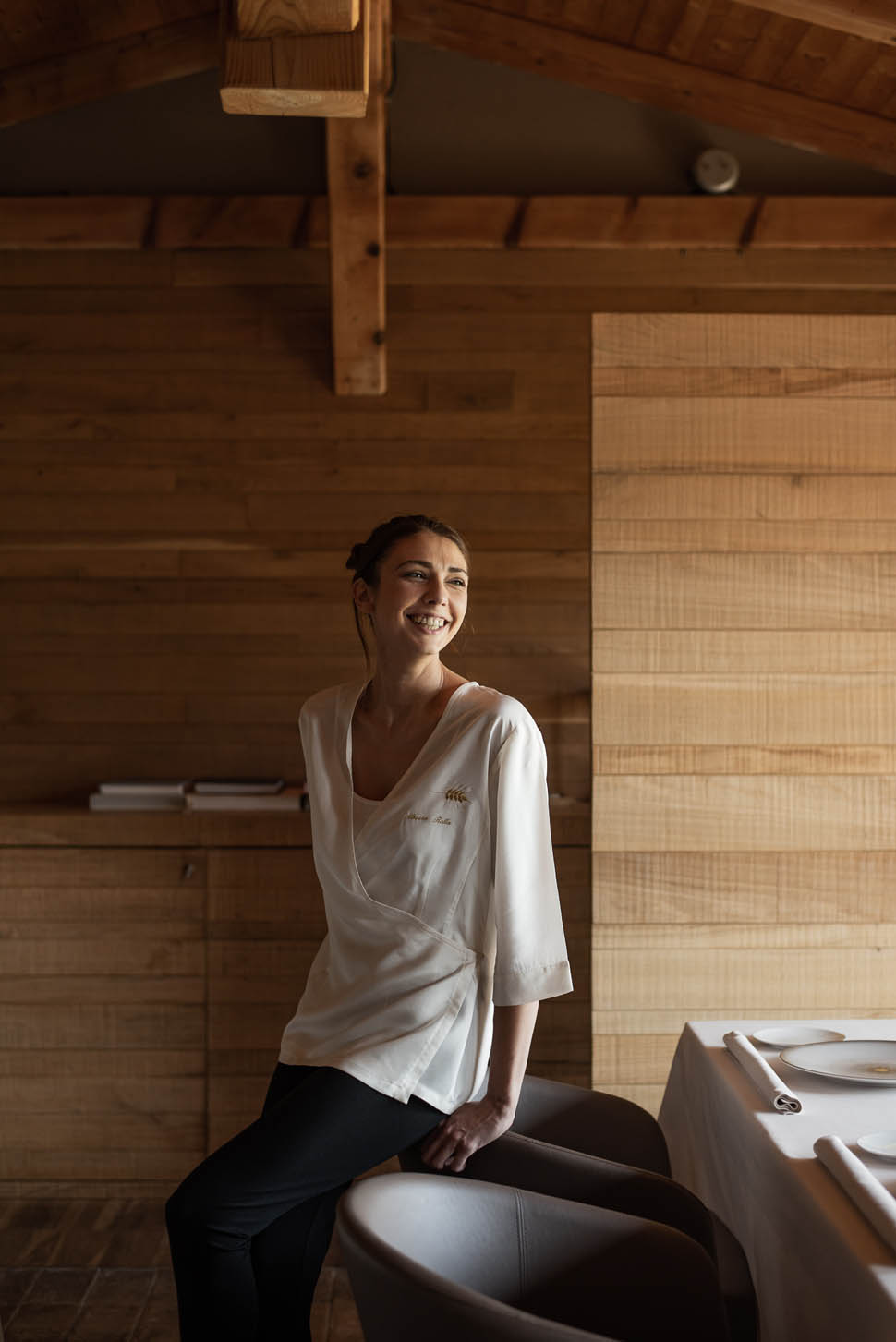
Listening to her story, another aspect of her that leaves one amused and admiring at the same time is a sense of stubborn naïveté that translates into concrete and effective action: “So I woke up one morning and set out to get a Michelin star: that's where I started.”
The restaurant
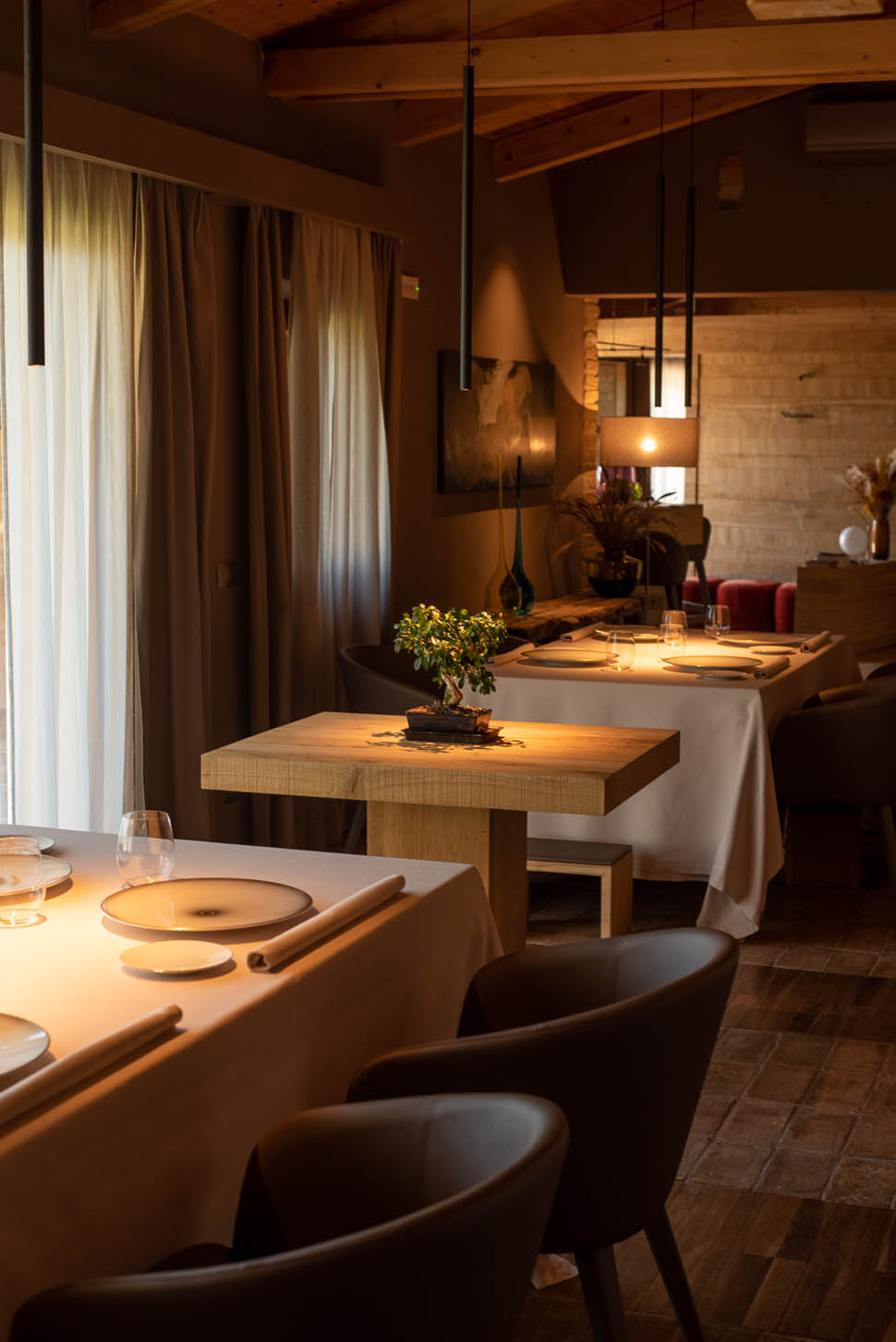
The first big step, becoming a 'gourmet' restaurant, is outlined after the pandemic: “Before here it was a ‘I want to but I can't,’ I was trying very hard but I wasn't ready: to learn I would go out and start remaking things I had seen and eaten, even if I didn't understand exactly what was being used. I didn't know the techniques, except for home cooking, but I always had this great sensitivity: I would try it and it came out well; even now if I had to teach, I wouldn't know how to do it.” Alessia talks about sensitivity, and it is clear that this is not a vague concept for her.
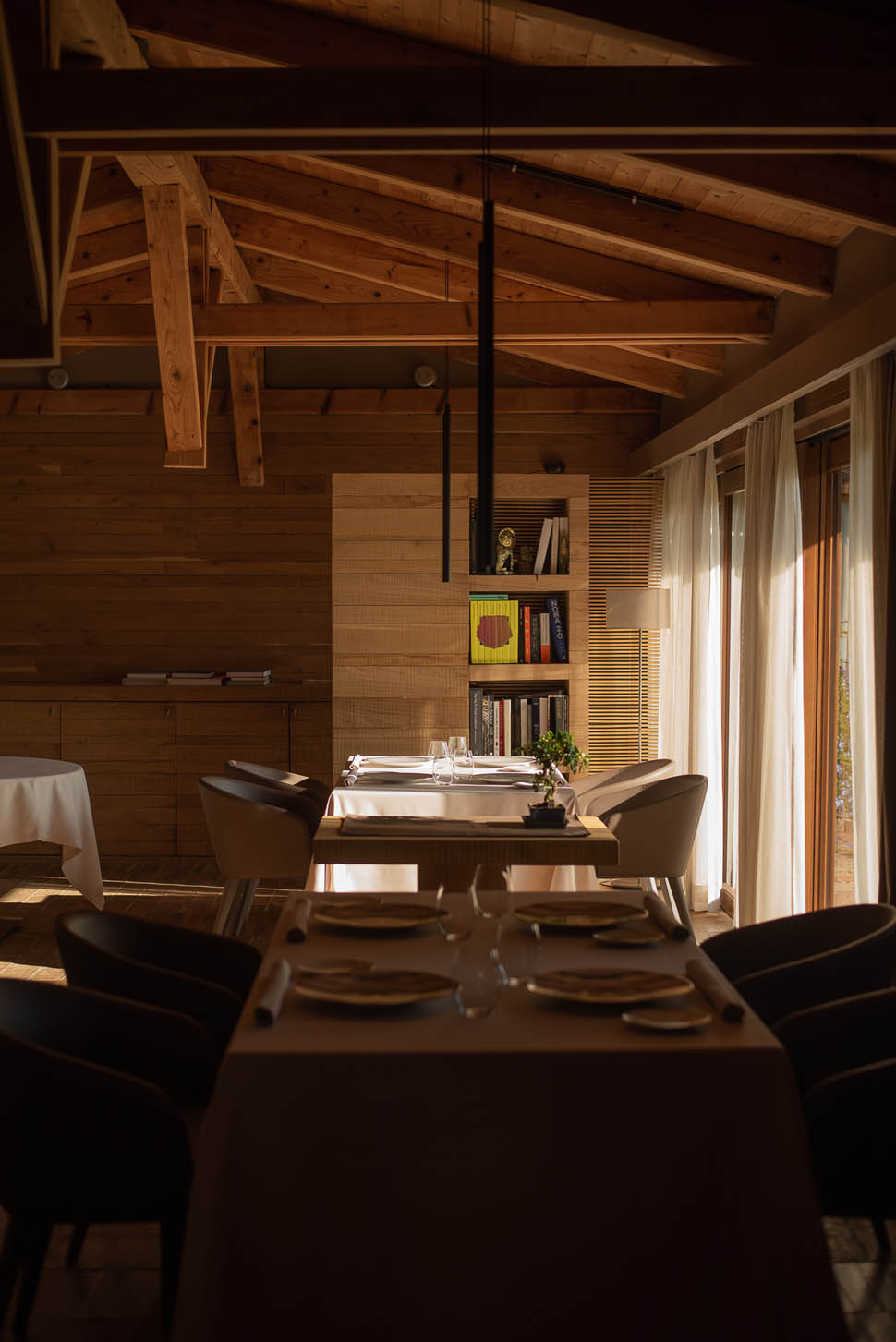
“There are a thousand nuances, that's the difference, because the same raw material today can be one way, tomorrow another, therein lies being sensitive.” Alessia studies, reads, tries and tries again, "something clicked, it was strange. I only did three Mondays in another restaurant to understand kitchen management: I was stressed, I wasn't eating and I wasn't sleeping: when I was 23 I ended up in a situation where I didn't have a clue about anything, how it worked; for the first three years the blast chiller I used it as a closet (laughs, ed.). It was complicated to figure out how to work with other people, now they are younger but in the beginning I had to manage village cooks, older than me: I had a 40-year-old guy as a collaborator, he had been a cook for twenty-five years and I for two!” The team is now well-coordinated and cohesive; Alessia also has very specific ideas in this regard.
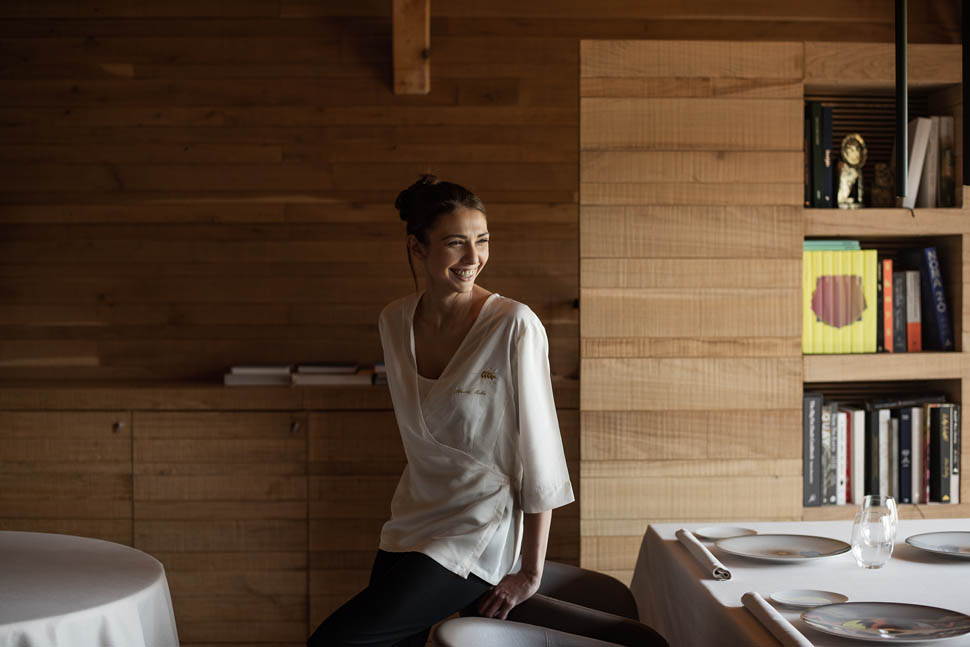
"I have been able to build a team where everyone actively contributes with a piece of themselves, I don't hire a person if they don't embrace the cause, also because we go on vacation together. I don't want it to be just a workplace, but a place where you can develop passions, and if your passion is service, wine, cooking, you can work with us." Even when it comes to sourcing ingredients, it runs in the family: “Erica (sous chef)and I ‘do’ the vegetable garden, her grandfather fishes shrimp for me in the pond, he's happy to do that because they eat his tench eggs. Then we take herbs and sow them, some at my house some at his house and at my in-laws, in different areas, so we can get them without them suffering. It's like the restaurant is a piece of each person's house: that's why it works, because we're making a monstrous effort: alone you don't do anything."
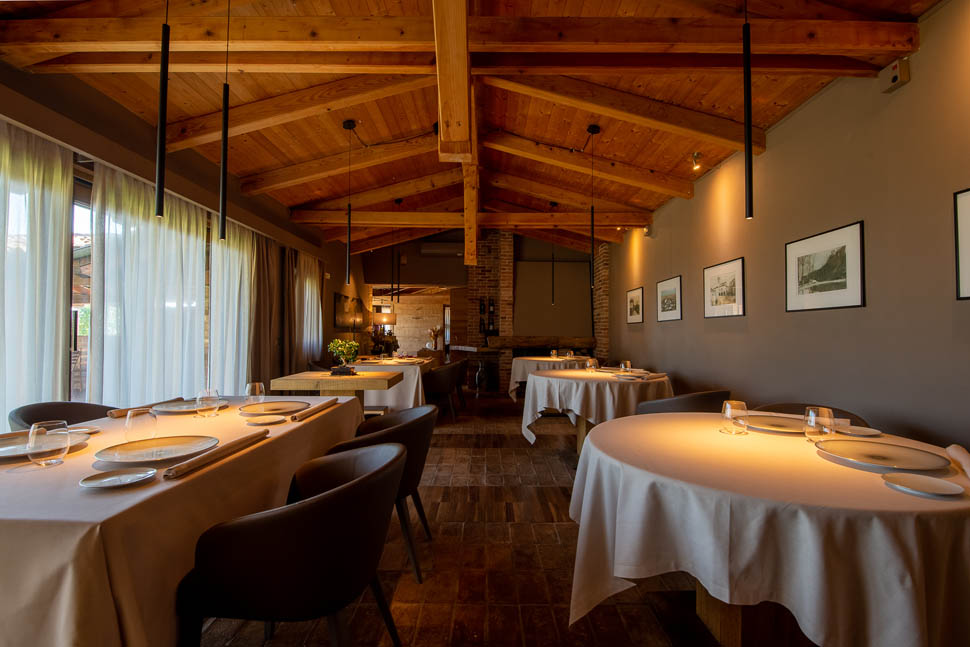
Riccardo Nicola, class of 1983 and Alessia's husband, is the maître of this warm and elegant corner; he, too, converted to hospitality after a different experience, in his case as a graphic designer in an architectural firm. So first he starts helping his brother Federico in the cellar and then begins to take care of the room. After the pandemic, he agrees with Alessia on the need to transform the restaurant into fine dining, reducing the number of place settings, raising the level of the kitchen, and replenishing a wine list that is now rich with about two hundred labels, with Piedmont playing a leading role in addition to the excellent house bottles.
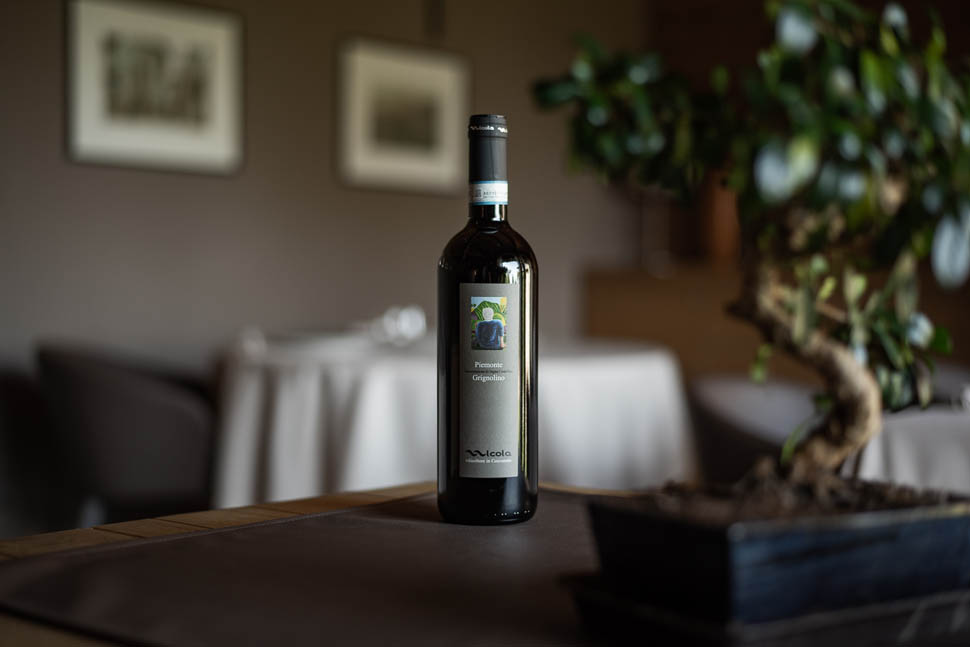
The dishes
How do you eat at Cantina Nicola? The first impact is that-if you don't know it-you would never guess that the cook has no outside experience, so high are both the technical level and the attention to detail in the dishes. We tasted the Alessia menu, the one in which the chef is freewheeling: “It's a very rural menu, (paradoxically) much more traditional than the traditional one, because we talk about the poor ingredients we grew up with: we want to actually make people understand the peasant culture of our places, give an image of where we are and thus identify our place. If people have to travel miles to come and discover a place, they don't have to eat the same things they already have in the city."
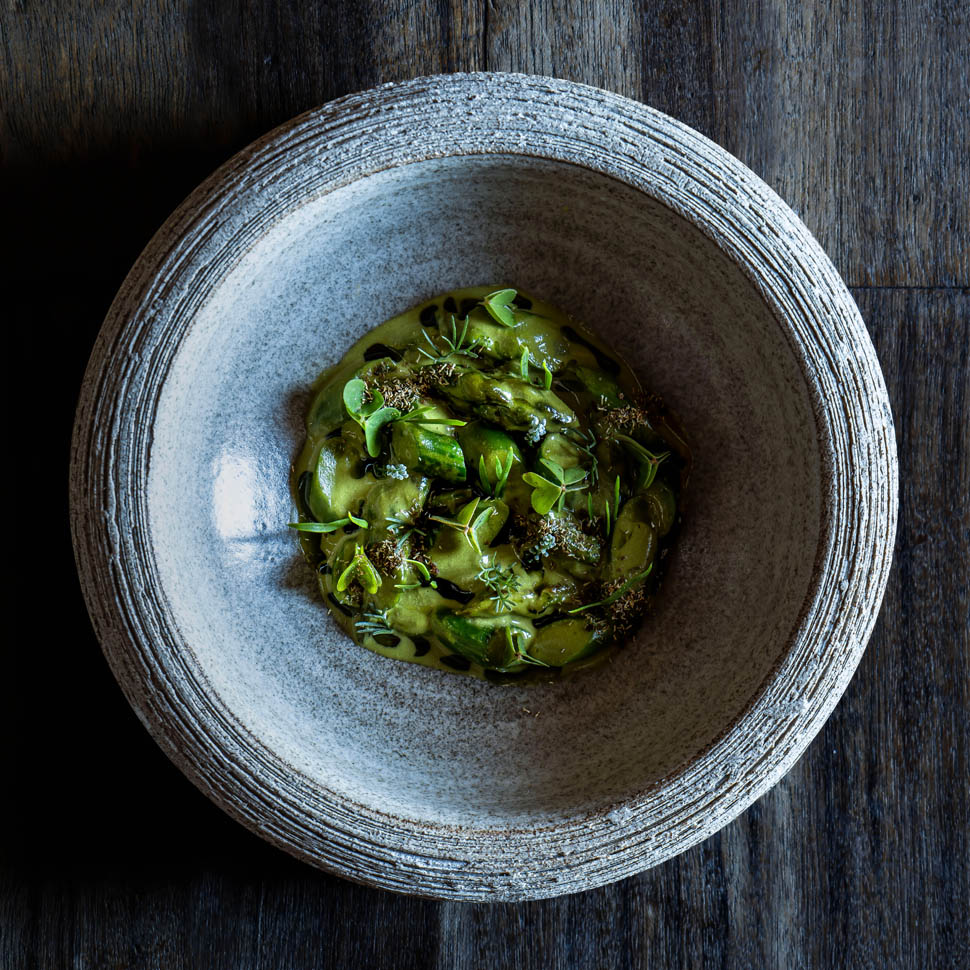
Alessia chose not to offer classic amuse bouche, but to bring three small hot dishes to the table separately, “To give importance to each of them: the first is asparagus from our garden with sea fennel that we go to the sea to pick, because we tried to grow it here, only it completely changes the taste, with chives and lentil and chamomile miso.” The escargot, which comes from a small farm in Santo Stefano Belbo, is very good, served with a licorice sauce, mustard greens, mustard grains, and a barbecued escarole. For lovers of the genre, like us, it is a delight to enjoy the cockscombs with a slightly spicy sauce made with a shichimi togarashi, a blend of oriental spices but in this case homemade with ingredients from the garden.
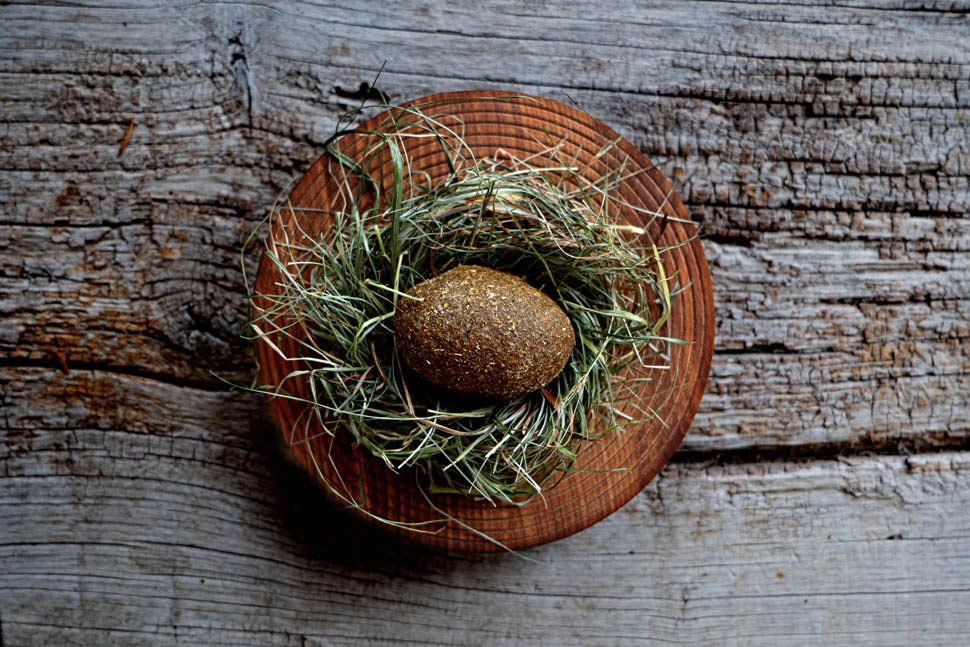
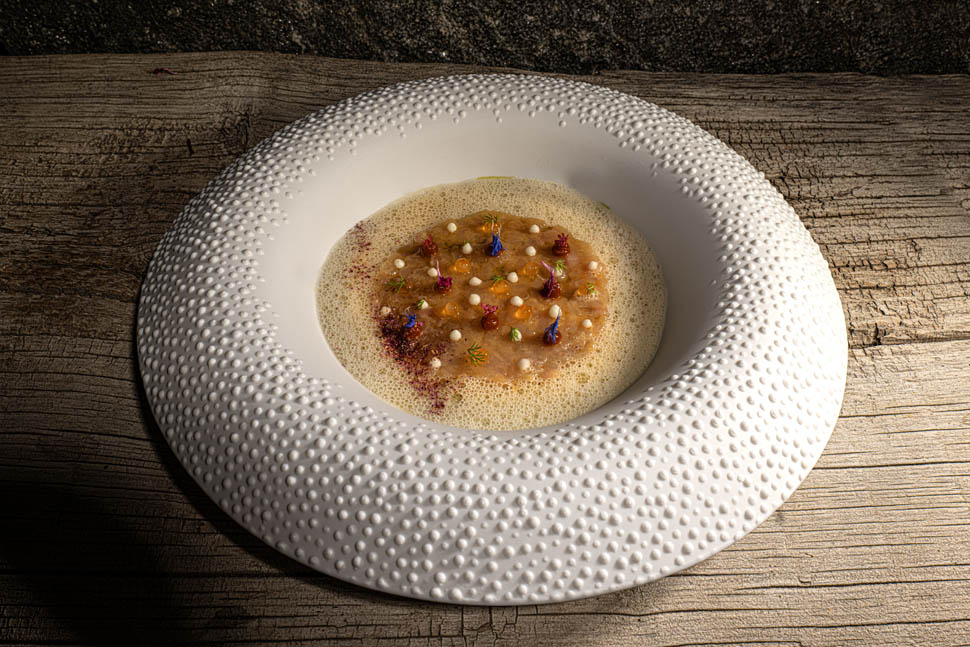
Delicious spring char that comes from a river farm in the Cuneo area with rosehip compote. “We pick berries in winter: my grandmother had nothing to eat and ate those, a little sweet a little sour, then we add a mayonnaise of fermented white asparagus." Berlingot (candy) is a form of stuffed pasta, typical French: in our version it is green in color thanks to a little matcha tea inside the dough.
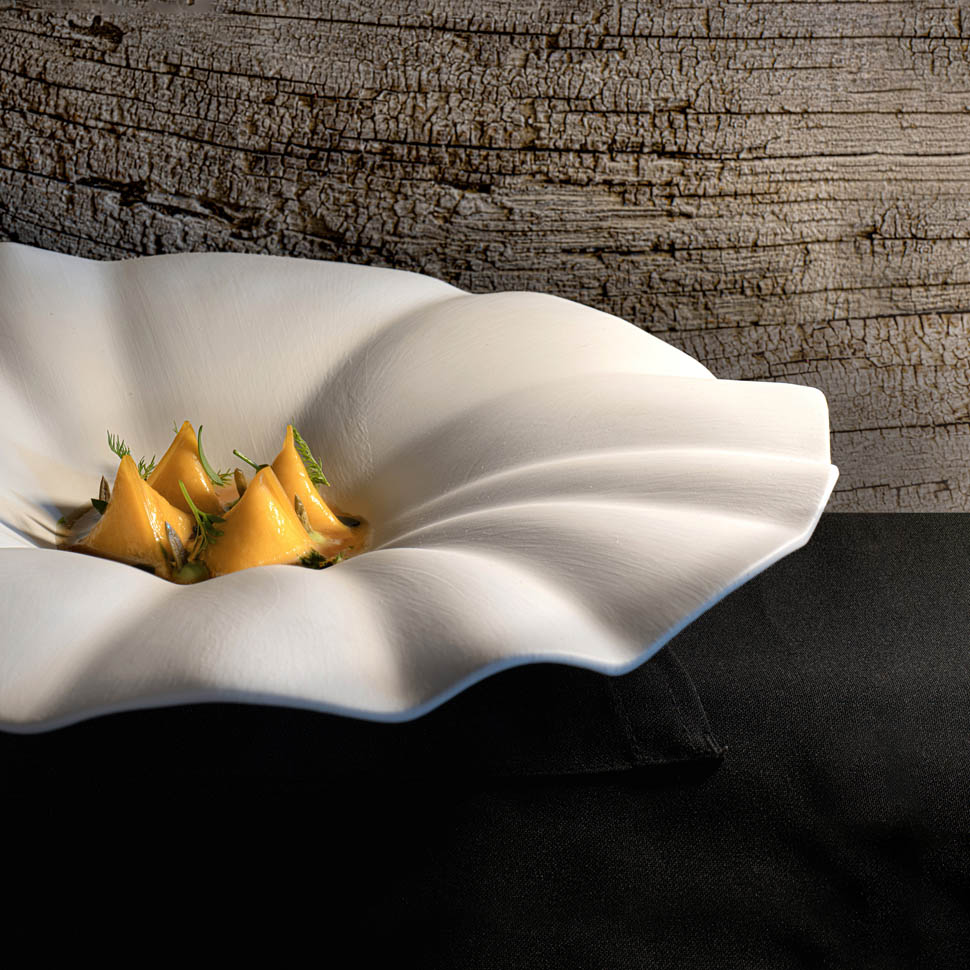
The filling is a fig 'ricotta' made by curdling raw cow's milk with the milk from the fig leaves, more citron grass and at the base a sauce of St. Peter's wort and maresina air: the mouthfeel is of seductive complexity with citrus, balsamic and bitter notes. Nice interlude is the ragu of porcini mushrooms, with truffled chanterelles, plums, marigolds and geranium leaf distillate. The traditional ravioli del plin are very good: “They are not made with ‘the three reds’, but simply with spinach and Parmigiano Reggiano: I decided to cream them with a vegetable demi-glace to make them lighter.”
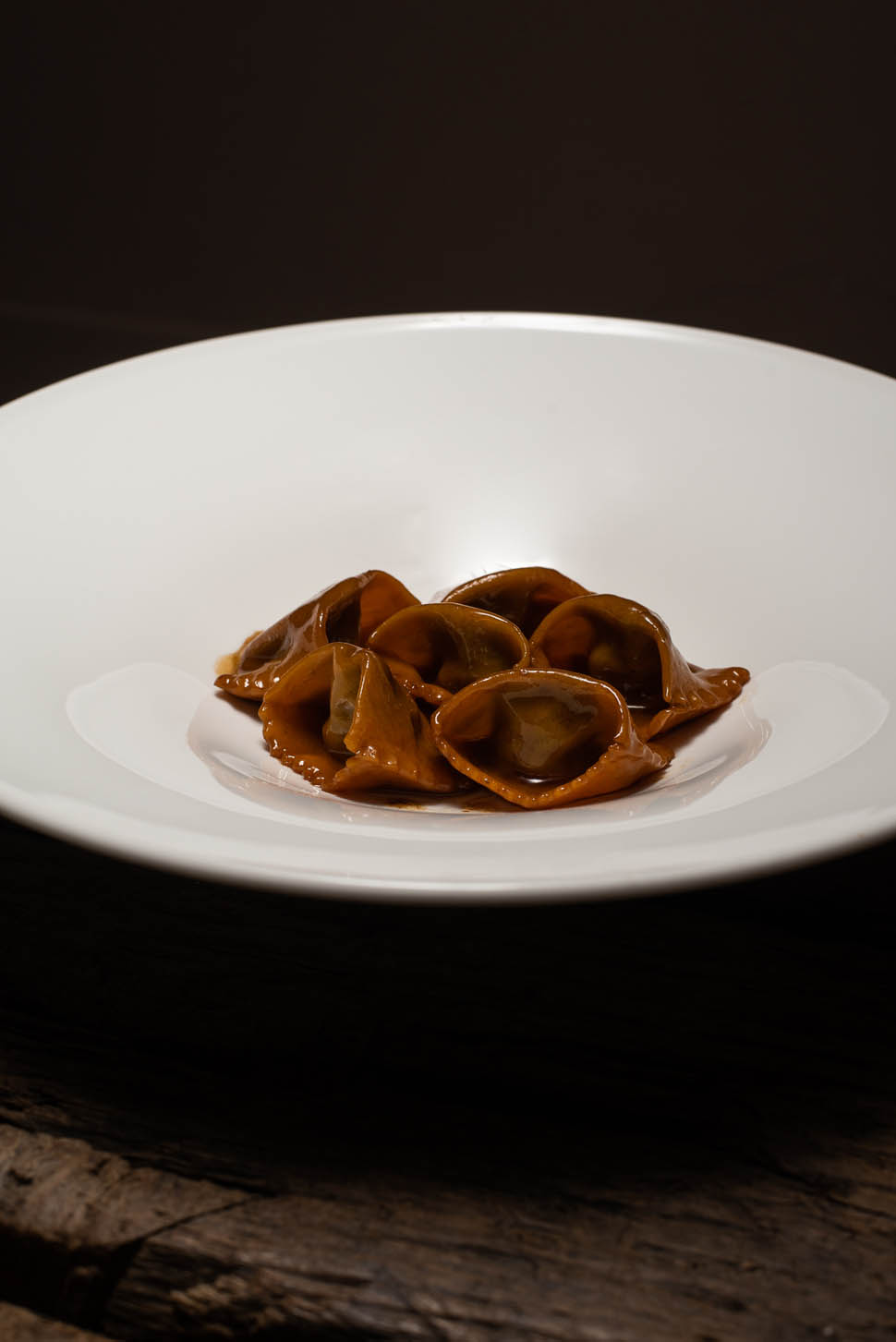
A real delicacy is the skewer of sweetbread and eel: the sweetbread is hearty and the eel is napped with a reduction of blackened apricots and its base; there is also creamed eel, thought of as a codfish, blanched dandelion and a cooked salad of wild herbs, all grilled with the addition of mushroom garum made from autumn waste. Then there is a chawanmushi pudding made with eel broth: the fish's liver is laid on top; it is served with a broth flavored with elderflower and first fruits including peas and fava beans.
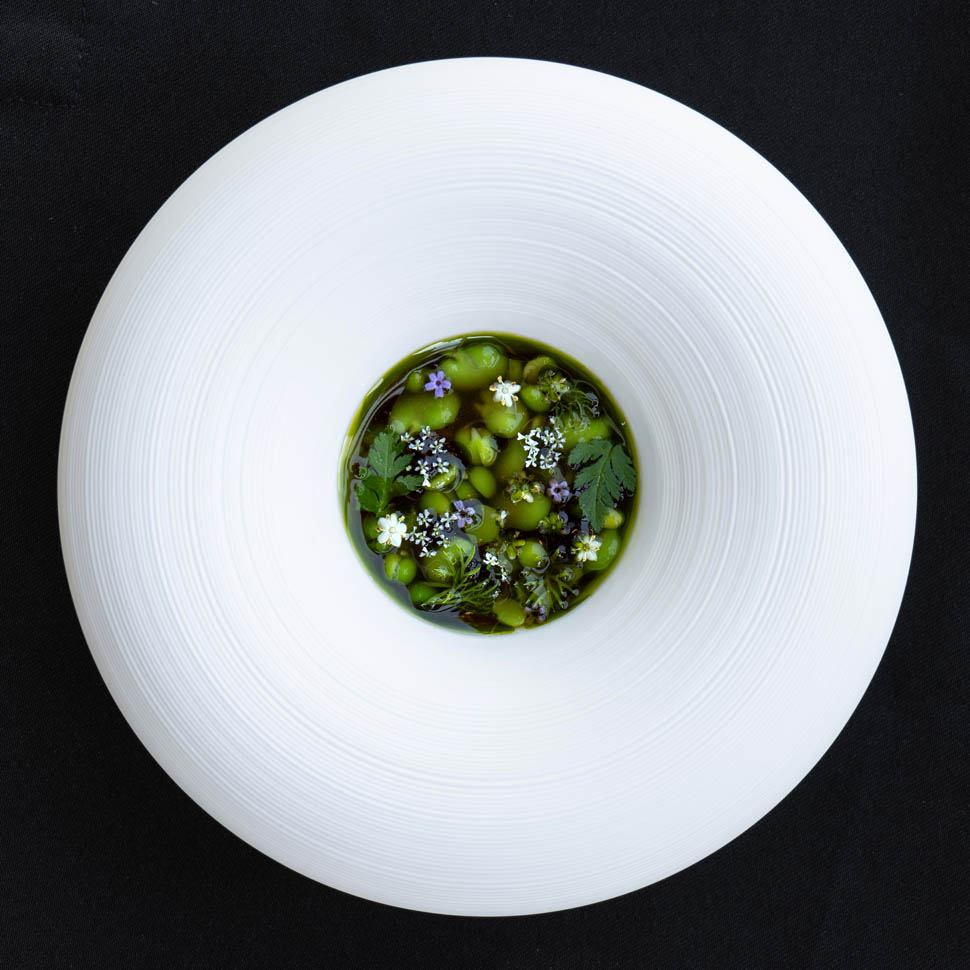
Liuk is a predessert reminiscent of the famous packaged ice cream: lemon sorbet with warm licorice mousse. Finally a remarkable closing dessert, a sphere with strawberry compote acidulated with sumac, tarragon mousse and sauce with strawberries and lavender; paired with a mint granita, made by distilling mint leaves, and more pickled green strawberry.
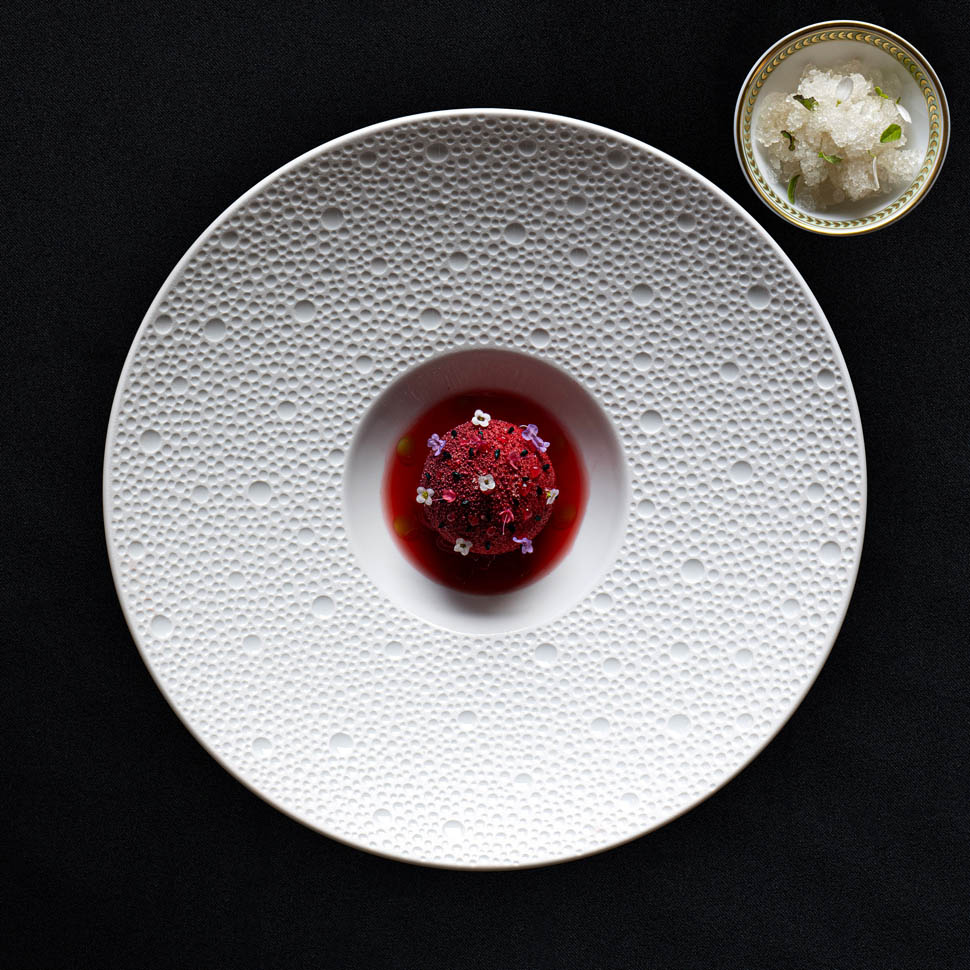
Just as there is no amuse bouche, there is no petit fours. A wise decision, not least because in its place comes a mouth-watering slice of cake: the galette des rois, with eggnog ice cream, the cake of kings, precisely. We will see some good things in Cocconato.
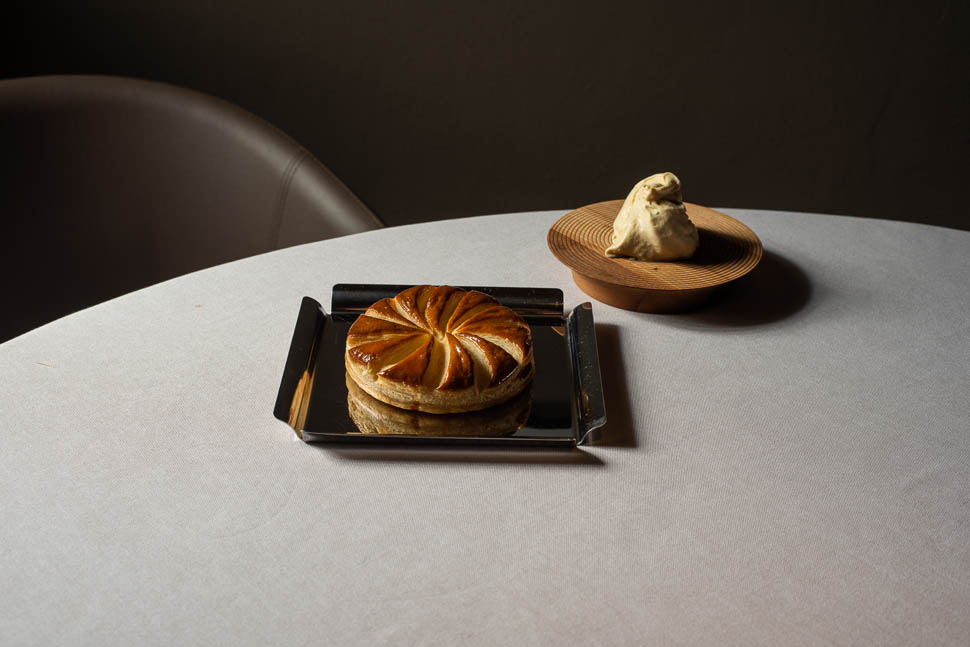
Contact
Cantina Nicola
Str. Roletto - Rocca, 14023 Cocconato AT
Phone: 392 954 3291
